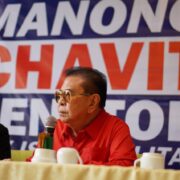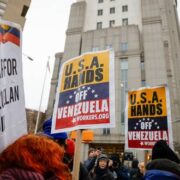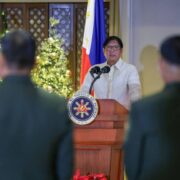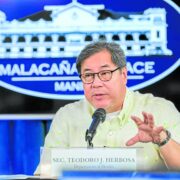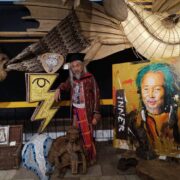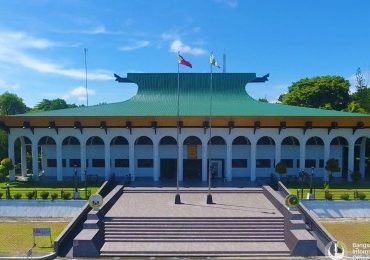Coconut farmers take center stage in Quezon festivity
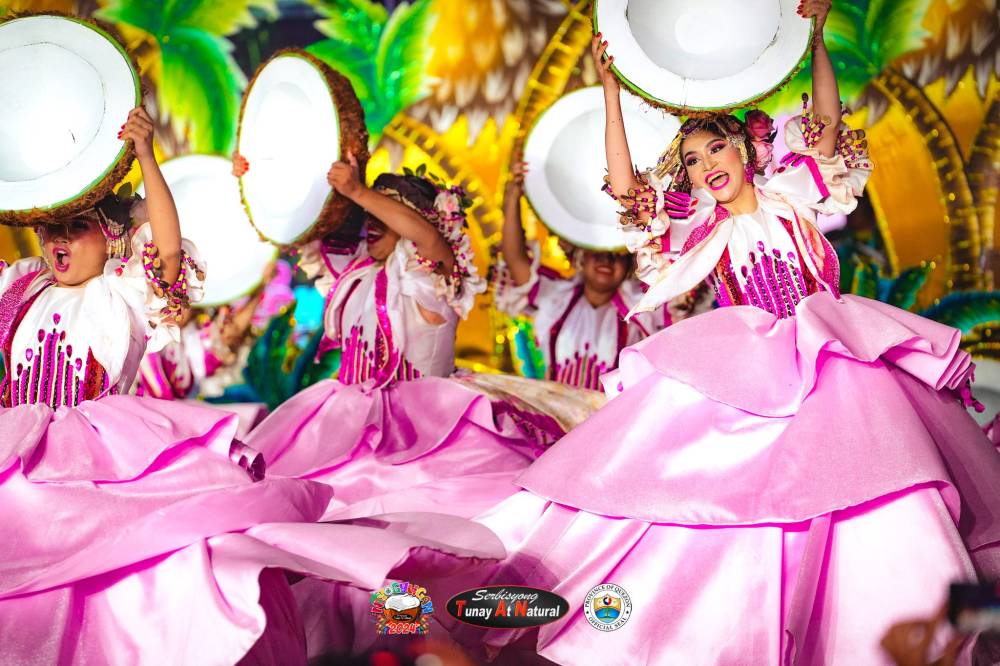
LUCENA CITY — The eleven-day Niyogyugan Festival in Quezon has again highlighted the coconut industry in the province and paid tribute to its farmers, amid calls from industry workers for the release of their benefits from the multi-billion-peso coco levy fund.
The festival held in this city opened on Aug. 9 with Gov. Angelina Tan welcoming the guests in a “tagayan” (liquor toasting) ritual with a swig of “lambanog,” made of distilled fermented coconut wine, held in front of a coconut-inspired pavilion.
During the festivity, the frontage of the Kapitolyo (provincial capitol building) that faces Perez Park in this city was filled with rows of coconut-inspired booths showcasing local culture, traditions, products, and tourist spots of the participating 38 towns and two cities.
Jun Lubid, Quezon public information officer, disclosed that only the town of San Narciso had no display booth during the festival, which ran from Aug. 9 to Aug. 19, but he did not provide the reason.
“We were awed with the creative beauty of the booths this year,” noted Maria Luna Mendez, a school teacher from Manila.
Mendez came with her family to the festival’s opening day, each of them armed with their own bag to fill with the food goodies and souvenir items, as she praised the people of Quezon for being “artistic and excellent cooks.”
The festival, derived from “niyog” (coconut) and “yugyog” (move to a fast beat), began in August 2011 and evolved into the weeklong “Niyogyugan Festival” to give tribute to coconut farmers and promote local tourism.
The festival was canceled in 2014 after Typhoon Glenda (international name: Rammasun) devastated coconut farms in the province. The event was also not held in 2020 and 2021 due to the COVID-19 pandemic.
Road map
“The festival is a celebration in recognition of the hard work and determination of every coconut farmer in the province,” Tan said.
Tan, in her festival opening speech, added the provincial government has continued to develop its roadmap to address the rehabilitation and problems besetting the coconut industry.
The provincial government earlier announced that five percent of the total sales of every booth will be donated to the Niyogyugan Foundation, which is raising funds to finance programs for industry workers and their families.
On Aug. 17, the whole stretch from Quezon Avenue to M. L. Tagarao Street was closed to traffic for the grand parade of dancing contingents in colorful costumes that was watched by throngs of spectators. A total of 26 floats followed, each of them showcasing the rich cultural heritage and tourist spots of their respective locality.
“The beautiful floats and the dancers were all awesome. Their creativity is a testament of the rich culture and tradition of the province,” enthused Grace Santos, a senior college student.
“Ka Felix,” a coconut farmer from Sariaya town, said the festival is a big boost to promote the coconut industry.
“But we hope that this time, the national government will also see the woes and sad plight of the coconut farmers,” he told the Inquirer in Filipino in an interview on Aug. 15.
Coco levy
Sen. Imee Marcos, who was in the city on Aug. 15, promised to initiate a Senate investigation into the delayed release of coconut levy fund to intended beneficiaries.
“The money is there, but nothing is being done. We’re getting old waiting,” Marcos said in her speech during the “Quezon Coconut Lambanog Summit” held at the Quezon Convention Center here as one of the festival events.
She said the concerned government agencies should fast-track the verification process of the coco levy fund’s beneficiaries.
Danny Carranza, secretary general of national farmers’ group Kilusan Para sa Tunay na Repormang Agraryo at Katarungang Panlipunan, blamed the slow implementation to the failure of concerned agencies to hire workers to handle the verification process or man the programs and services to be provided to coconut farmers.
Quezon farmers are believed to have been the biggest contributors to the coco levy fund collected mostly during the martial law regime of the ousted late President Ferdinand Marcos Sr.
The fund, now with the government, was estimated to be around P100 billion. The Philippine Coconut Authority has been tasked to implement the government projects and programs using the fund.





